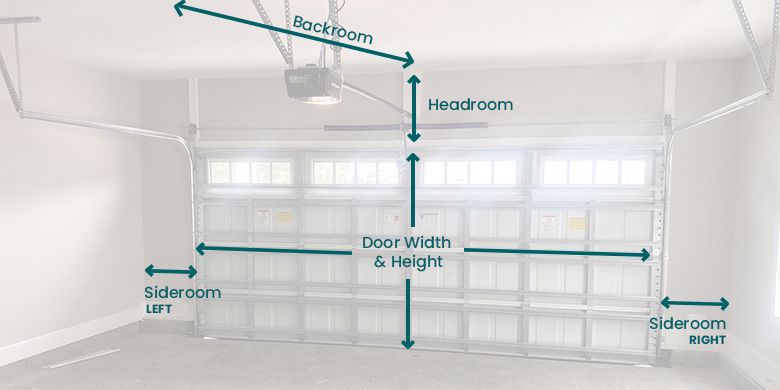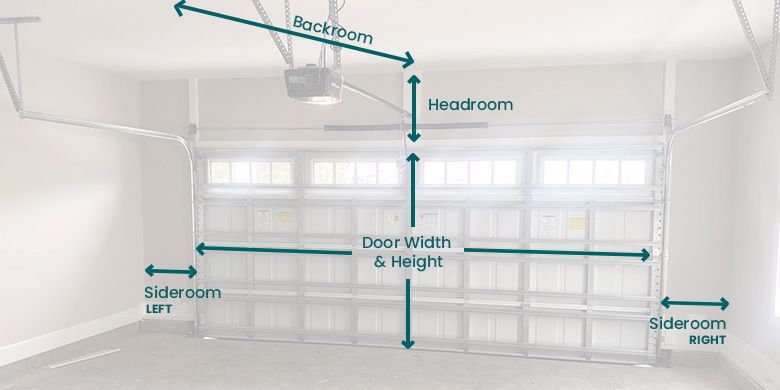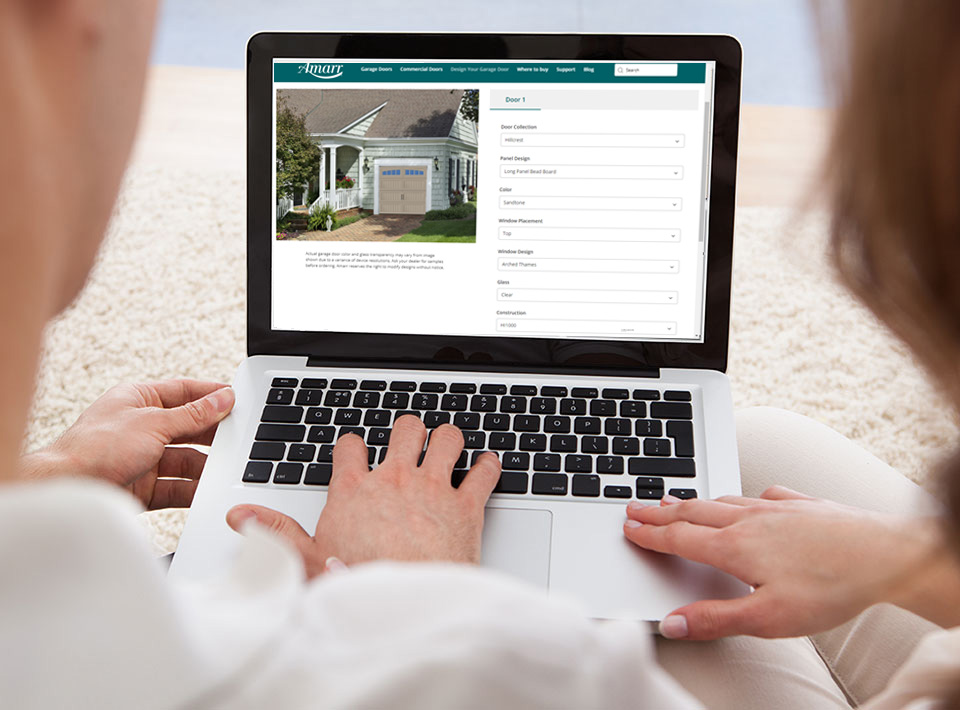What’s the Standard Garage Door Height? A Garage Door Sizing Guide
- Mar 29, 2024
- Design Inspiration
- 6 minute read

Garage doors come in a variety of sizes for both residential and commercial applications; however, there is some method to the madness. Residential garage doors tend to have consistency in their size, with certain dimensions being fairly standard across the board.
Here, we’re talking all about residential garage door sizing from single-car to double, standard garage door sizes and even how to measure your garage to get the perfect fit when shopping for a new door.
Standard Garage Door Sizes
While every garage door is different, there are typical sizes, or size ranges, that you can expect to encounter on many houses in North America.
Here are a few common garage door sizes:
Single Garage Door Size:
- Width: 8 feet (2.4 meters), 9 feet (2.7 meters) or 10 feet (3 meters)
- Height: 7 feet (2.1 meters) or 8 feet (2.4 meters)
Double Garage Door Size:
- Width: 16 feet (4.9 meters), 18 feet (5.5 meters) or 20 feet (6.1 meters)
- Height: 7 feet (2.1 meters) or 8 feet (2.4 meters)
Sure, these are a few general standard sizes, but it’s essential to measure your garage opening accurately before purchasing a new door replacement. Variations in garage design can affect the type of garage door you need, even if it looks fairly typical to the naked eye.
Additionally, garage door sizes can vary based on factors such as the type of door (e.g., sectional, roll-up, swing-out), material, insulation thickness and whether the door is manual or motorized.
So, even if you suspect that you need a standard size for your one or two car garage, it’s always important to measure before making a purchase.

While most garage doors have standard sizing, it’s still important to measure the opening to get the right fit.
Have an atypical garage door opening or size? Some manufacturers offer custom garage door sizes to fit non-standard openings. If that sounds like your situation, make sure to find a local dealer near you to talk options.
Four Reasons Why Garage Door Size is Important
The wrong size garage door won’t only cause mechanical problems but aesthetic, economic and even security troubles as well. Here’s how:
1. Fit and Functionality
A garage door needs to fit the opening of your garage properly. If it’s too small, it won’t cover the entire opening, leaving gaps that compromise security and insulation. If it’s too large, installation is virtually impossible or may cause the door to get stuck during operation.
In carpentry, they say: “Measure twice, cut once.” When buying a new garage door, tell yourself something similar: “Measure twice, purchase once.”
2. Aesthetic Appeal
The size of the garage door affects the overall appearance of your home. A wrong size option — one that’s too small or too large — can look disproportionate and detract from the curb appeal.
3. Insulation and Energy Efficiency
Gaps around an improperly sized door can lead to heat loss in winter and heat gain in summer, which can increase your monthly energy costs.
A garage door that’s the right size for your space can be properly sealed around its edges to increase insulation effectiveness.
4. Safety and Security
Garage door security is an important part of home security. A properly fitting garage door closes suitably, providing better security for both your home and belongings. It also reduces the risk of safety incidents by ensuring that the door operates smoothly without any obstructions, which means there’s less chance of you or your family getting injured as a result of a faulty, poorly fitting door.

Properly sized doors are essential in ensuring garage door security.
How To Measure Your Garage Door for the Perfect Fit
We understand that measuring your own garage door can be a bit challenging — especially if you’ve never tried it before. Here are some helpful tips to simplify the process for measuring residential garage doors.
If you need help to ensure you get the best fit possible, reach out to a professional for assistance.

1. Measure Width
To begin, measure the width of the garage door opening at its widest point, from the inside of one side jamb to the inside of the opposite side jamb.
Take measurements at both the top and bottom of the opening, as garage openings are not always perfectly square — although in a perfect world, they would be! Once you’ve collected these measurements, use the smallest of them to ensure the door fits without rubbing against the frame.
2. Measure Height
Measure the height of the garage door opening from the floor to the underside of the header or ceiling. Again, take measurements on both sides and at the center of the opening to account for any variations in size. Use the shortest measurement for the best results.
3. Measure Side Room and Headroom
Measure the space on the sides of the opening (side room) and above the opening (headroom) to ensure there is enough space for the tracks and springs of the new door system. Consult the manufacturer’s specifications for the required side room and headroom for your chosen door.
Additional Considerations When Measuring A Garage Door Opening
Check for Obstructions
If you have a garage door opener, light fixture or any other obstructions near the garage door opening, make sure to account for those when measuring as they might interfere with the installation of the new door. Make sure there is enough clearance for the new garage door to operate smoothly.
Take Note of the Floor Slope
Check if the garage floor slopes. If it does, measure the slope and consider this when selecting the door size or ordering a custom door.
Other Factors To Consider
If you’re replacing an existing door, note the type of door and any special features like insulation or windows. This information will help you choose the right replacement door.
When all else fails, or you just need a second opinion, it’s worth reiterating: consult a professional. If you’re unsure about taking measurements on your own or if your garage opening is non-standard, it’s best to consult a professional garage door installer. They can provide accurate measurements and recommend the best door size and type for your needs.
Design Your Perfect Garage Door That Fits the Space and Your Taste
Our online design tool allows you to create your perfect door design that fits both your taste and your space!
Choose the number of doors and their sizes, and then get into the fun part by choosing the design elements you want.
Once you’re done, review and save your creation and find a local dealer to help bring your vision to life.

